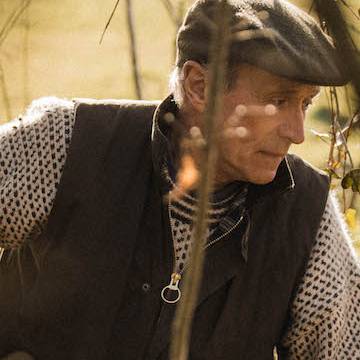Hedges are an essential part of the British landscape, providing shelter, food, and a habitat for a variety of wildlife and forming boundaries for animals such as our Red Ruby Devon Cattle.
But to keep hedges healthy and productive, they need regular maintenance, and one way to achieve this is through the ancient craft of hedge laying.
This technique has been used on these shores for centuries with several different styles of hedge laying appearing depending on your location.
Different Hedge Laying Styles
Devon
Devon style or the pleaching style involves cutting the stem at an angle and then bending it over so that the top of the stem points towards the same side of the hedge. The branches are woven through the cut stems to create a dense barrier. This hedge is normally laid on top of a bank, which forms the main barrier against livestock.
Midland
The Midland style or the bullock style involves cutting the stem at an angle and then bending it over, so the top of the stem points towards the opposite side of the hedge. The branches are then woven through the cut stems to create a dense barrier.
Welsh Border
The Welsh Border style is also known as the stake and pleach style. It involves cutting the stem at an angle and then bending it over so that the top of the stem points towards the same side of the hedge. The branches are then woven through the cut stems and held in place with stakes to create a dense barrier.
Yorkshire
The Yorkshire style is also known as the stake and binder style. It involves cutting the stem at an angle and then bending it over so that the top of the stem points towards the opposite side of the hedge. The branches are then woven through the cut stems and held in place with binders to create a dense barrier.
Somerset
The Somerset style involves cutting the stems at an angle and then weaving them into each other without bending them over, creating a more natural and less structured hedge.
Hedge Laying Tradition
Traditionally, hedge layers were paid in kind, rather than in cash. One of the most common forms of payment was cider, which was often brewed by the landowner or a local farmer. The tradition of paying hedge layers in cider goes back hundreds of years, and it was seen as a way of showing appreciation for their hard work.
With the invention of modern flail hedge cutters, this labour-intensive craft began to die out with only a small number of skilled workers practising today.
However, it never left the bushy boundaries of Pipers Farm. Our commitment to farming in harmony with nature has helped keep this tradition alive, and we are reaping the benefits of looking after our hedges.
We are surrounded by dense and diverse habitat that provides food, shelter, and nesting sites for a wide range of wildlife. This includes birds, insects, small mammals, and even reptiles.
By sustainably managing the hedgerows through hedge laying we not only avoid the need for harsh chemicals or heavy machinery, but we also preserve local heritage.
Hedge laying is a traditional skill that has been practised for hundreds of years. Keeping these crafts alive means these skills will be passed onto future generations and in turn, keep our animals and wildlife thriving too.
